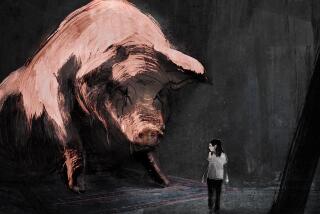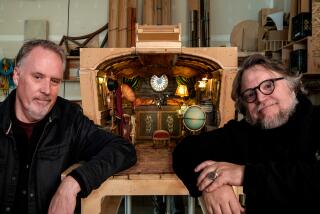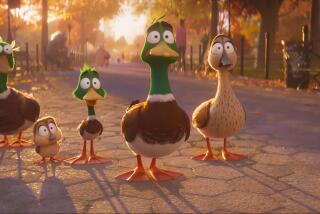‘CAULDRON’: WORDS AWAY FROM THE POT OF GOLD
The animated cartoon is one of those childhood joys that for me has been absolutely fade-proof. The bathroom scales and the dentist’s chair have stripped the pleasure from candy, except as an occasional venial sin, and the ball glove has gone stiff as a board on a shelf in the garage.
But I would still travel a far piece to see a superior work of animation. And if you care about animation as an art form, it is impossible not to be thrilled by Disney’s “The Black Cauldron.” As against the flat, bare animation of Saturday-morning cartoons, it is the difference between a Wanted poster on a post office wall and a Rembrandt.
The new film, said to have been in planning since 1971, in production since 1980 and to have cost $25 million, is beautiful to see, and its shimmering reflections, its flocks of birds in flight, its play of light and shadow and its full-figure motion all suggest that in one area of craftsmanship, plastic has not replaced hand-carved hardwoods, although it is also clear that new technologies have come along to make the effects even richer and subtler than before.
But there is a problem, as Charles Solomon noted in his review. The iron law of all film, of all storytelling, is that in the beginning is the word, and it had better be good.
While purists used to attack Walt Disney for reshaping classic tales to his own uses, I always thought it was a bum rap and that Walt was right and clever to use familiar material as the launching ground for the matchless flights of comic fancy conjured up by the boss and his band of artists (grimacing into their mirrors and noting the results on sketch pads).
The trouble with the Lloyd Alexander stories, as adapted by others, that are the basis for “The Black Cauldron” is that they lack the simplicity and the clarity of great fairy tales, or the child-sized wonder of Margery Sharp’s stories that became “The Rescuers,” the last really successful Disney animated feature.
One wonderful chase in the old riotously inventive slapstick tradition and two minor comic figures suggest the pleasures that can result when the inventing animators have a fertile ground to start from. But a lot of the way the film seems to be dutifully following a rather cumbersome and not overly attractive story. (I await testimony that it’s too scary for small fry; my guess is it may be found more baffling than frightening.)
At that, I have to confess a surpassing lack of enthusiasm for Tolkien and Tolkien-like other-world concoctions, with their blizzards of invented names and places. Tolkien did it as well as it can be done, although the task of translation defeated some heroic animation by Ralph Bakshi a few years ago.
Tolkien has his legions of followers, but I feel only a finger-drumming impatience, in “The Black Cauldron,” with Alexander’s vaguely Welsh and all too similar-sounding character names.
It comes to seem self-parodying: Ergo, son of the legendary warrior-king Id from the land of Nasalthrob, which is 4 1/2 sunsets beyond the treacherous Saltine swamp, sets forth with his magic flagon, a change of underwear and his faithful but inept companion, Aerosol, to rescue his betrothed, Princess Prell, held captive in a fast-food restaurant by the evil Elbow People in the kingdom of Sleer, which seems to be east of Barstow, and it does go on and on.
If I were doing it, I’d book one of the great cartoon shorts, Donald Duck at his most impudent, maybe, to remind young attendees of the whole range of the pleasures of animation. You certainly don’t have to be an animation freak to like “The Black Cauldron”; its liveliest moments honor the studio’s fine traditions. But being a freak does help in those stretches when the tale cannot quite wag the dog.
I hope that Disney, despite this and other mixed notices, will risk another animated feature, despite the cost. There is nothing else like them, and when the words justify the pictures, they live forever.
More to Read
Only good movies
Get the Indie Focus newsletter, Mark Olsen's weekly guide to the world of cinema.
You may occasionally receive promotional content from the Los Angeles Times.










